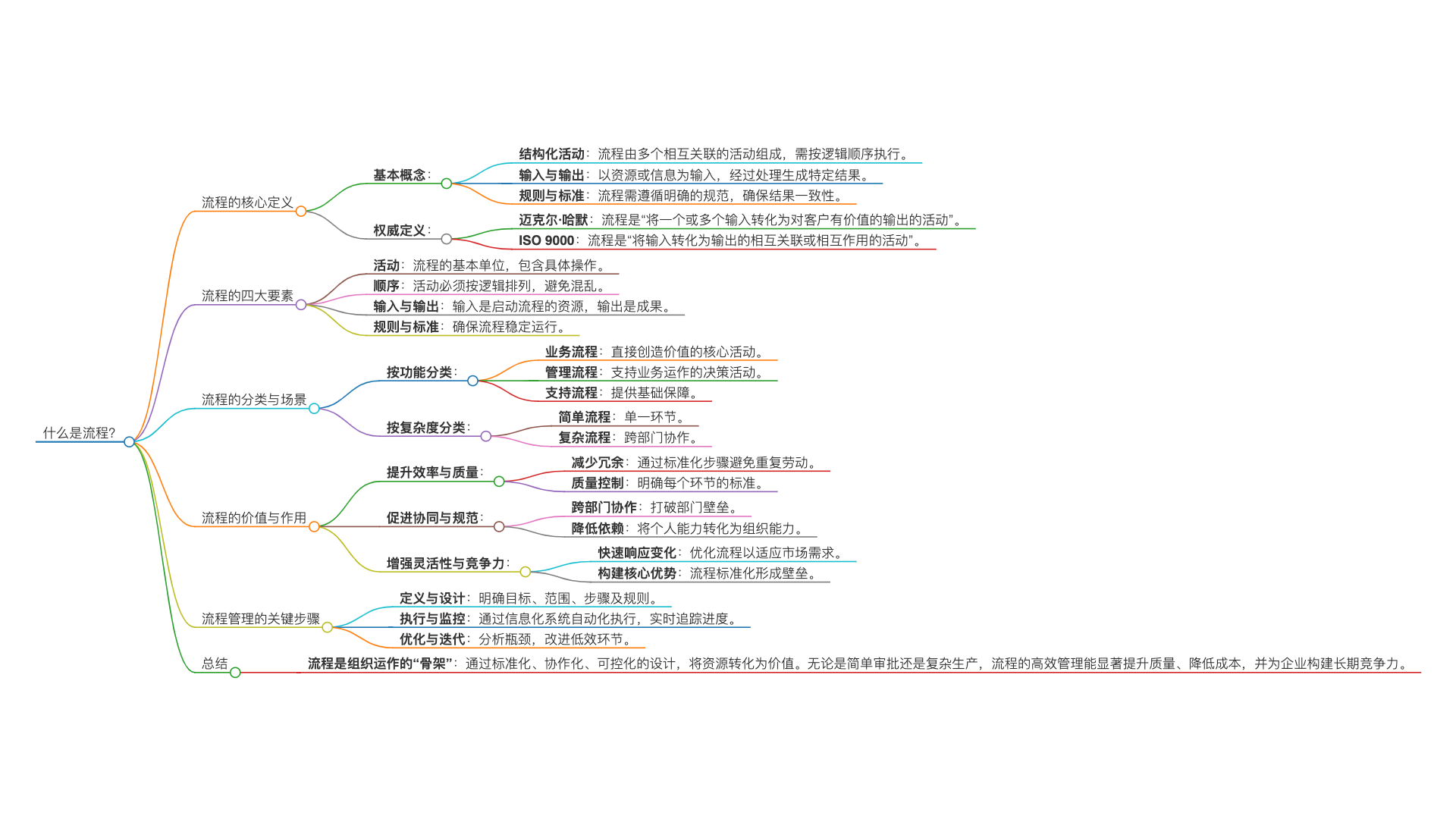What is a Flow?
A Flow (Process) is a series of ordered, interconnected activities or steps designed to transform inputs (resources, information) into valuable outputs (results, products) for users or organizations. It serves as the core mechanism of organizational operations, spanning across production, management, service, and other domains. Through standardized steps, clear rules, and coordinated resources, it achieves efficient goal attainment.
I. Core Definition of Flow
- Structured Activities: A flow consists of multiple interconnected activities that must be executed in logical sequence (e.g., procurement → production → quality inspection → sales in manufacturing enterprises).
- Inputs and Outputs: Transforms resources or information into specific results (e.g., customer order → production → product delivery).
- Rules and Standards: Flows must follow clear specifications (e.g., operational standards, time limits) to ensure result consistency (e.g., McDonald's standardized table cleaning process).
II. Four Key Elements of Flow
| Element | Description | Example |
|---|---|---|
| Activities | Basic units of flow, containing specific operations (e.g., sorting packages, writing code) | Sorting → transportation → delivery in express delivery flow. |
| Sequence | Activities must be arranged logically to avoid confusion (e.g., software development requires requirements analysis → design → coding → testing) | Incorrect equipment transportation sequence may lead to assembly failure |
| Inputs & Outputs | Inputs are resources that initiate the flow (e.g., customer orders), outputs are results (e.g., delivered products) | In catering flow, input is order, output is dishes. |
| Rules & Standards | Ensure stable flow operation (e.g., medical processes must follow aseptic operation standards) | Financial reimbursement must comply with company approval standards. |
III. Flow Classification and Scenarios
By Function
Business Flow: Core activities that directly create value (e.g., order processing, product development). Management Flow: Decision-making activities that support business operations (e.g., performance evaluation, strategy formulation) Support Flow: Provides basic support (e.g., IT maintenance, equipment procurement)
By Complexity
Simple Flow: Single step (e.g., leave approval only requires department manager review). Complex Flow: Cross-department collaboration (e.g., new product development involves market research, design, production, procurement)
IV. Value and Role of Flow
Reduce Redundancy
- Standardized Steps: Avoid redundant work through standardized processes, such as McDonald's table cleaning process that effectively saves time. Quality Control
- Clear Standards: Set clear standards at each step, such as strict inspection of components in automobile manufacturing.
Promote Collaboration and StandardizationCross-department Collaboration
- Break Department Barriers: Achieve cross-department collaboration through flow management, such as Huawei's implementation of ten-thousand-person collaboration through flow management. Reduce Dependencies
- Transform Capabilities: Convert individual capabilities into organizational capabilities, ensuring processes continue to operate normally after employee departure.
Enhance Flexibility and Competitiveness
- Quick Response to Changes: Optimize flows to adapt to market demands
- Build Core Advantages: Standardized flows form barriers
V. Key Steps in Flow Management
Definition and Design
- Clarify goals, scope, steps, and rules
Execution and Monitoring
- Automate execution through information systems
Optimization and Iteration
- Analyze bottlenecks, improve inefficient steps

Summary
Flow is the "skeleton" of organizational operations. Through standardized, collaborative, and controllable design, it transforms resources into value. Whether it's simple approval or complex production, efficient flow management can significantly improve quality, reduce costs, and build long-term competitiveness for enterprises.